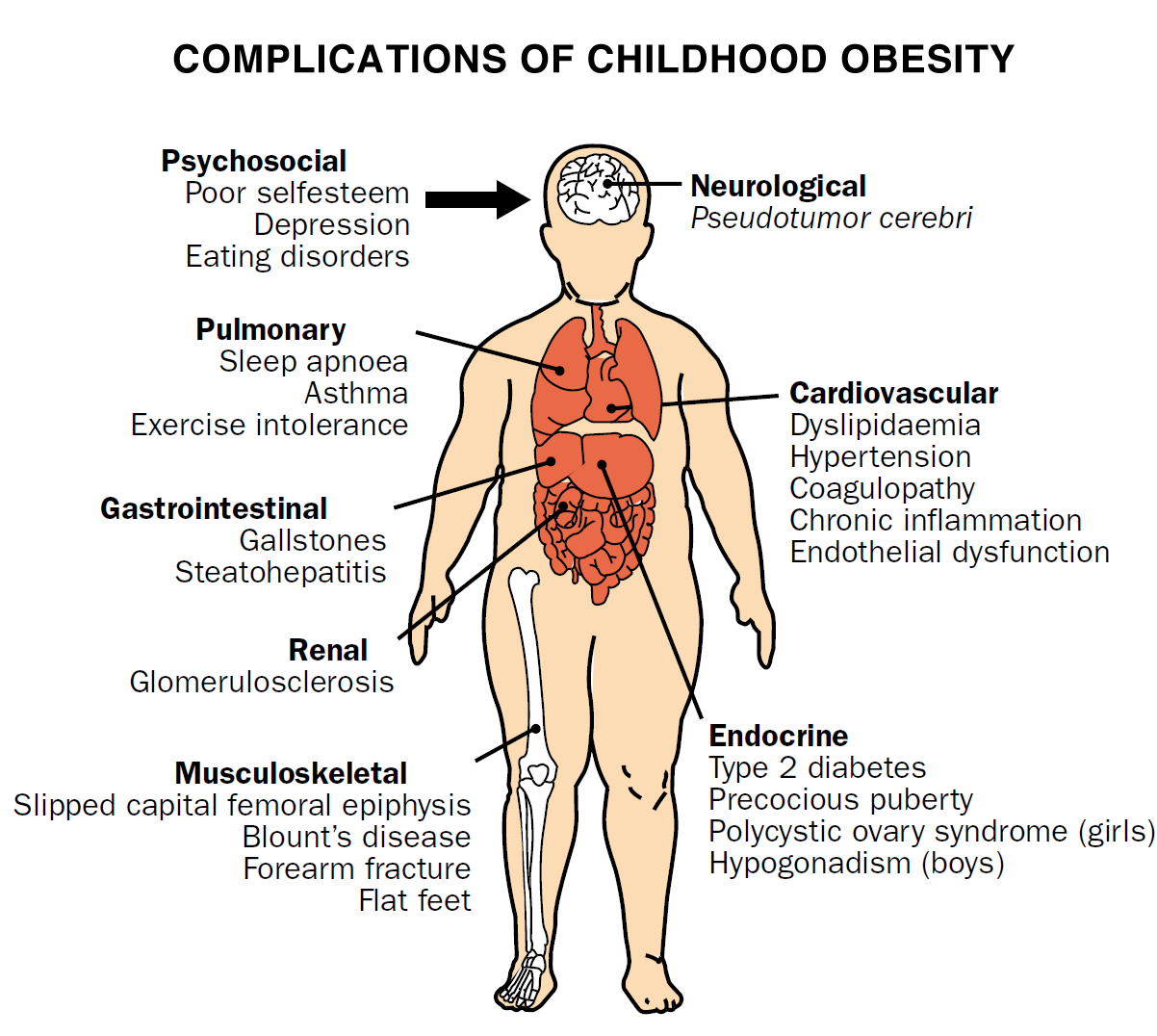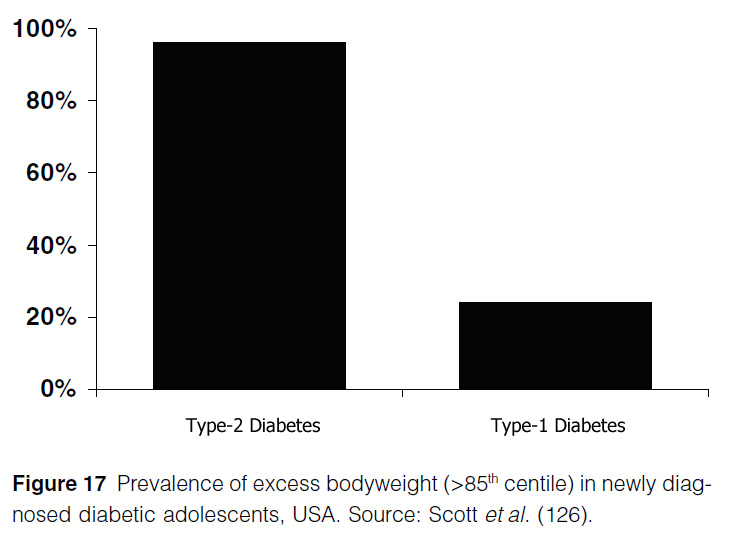Childhood, Obesity & Diseases

Although the biggest impact of obesity on health occurs during adulthood, overweight children are already experiencing a number of serious health problems, the most widespread of which are diabetes and hypertension.
Obese or inactive children can also develop heart disease or kidney disease, without even being diabetic or hypertensive.
Pediatricians are already diagnosing related diseases in overweight children that were once thought of primarily as “adult” diseases:
- Over 85% of people with type 2 diabetes are overweight.
- The incidence of diabetes in the US has increased 33% over the last decade.
- By 1999, type 2 diabetes accounted for up to 45% of new pediatric cases of diabetes.
- Weight-gains of 11 to 17.6 lbs increase Coronary Heart Disease (CHD) risk of fatal and non-fatal heart attack by 25%. Weight-gains of 44 lbs or more increase this risk by more than 2.5 times (250%).
- Overweight and obesity are closely related to sleep-apnea, which can produce serious heart & circulatory complications including pulmonary and systemic hypertension and cardiac arrhythmias.
- For persons with a BMI (Body Mass Index) of 30 (obesity threshold), mortality rates are generally increased by 50% to 100% above that of persons with BMIs of 20-25 (normal range).
- 68.8% of people diagnosed with arthritis are overweight or obese.
- For every pound of body-weight lost, there is a 4-pound reduction in knee joint stress among overweight and obese people.
- Overweight and obese individuals are 2-3 times as likely to develop gallstone disease.
- Obesity leads to non-alcoholic steatohepatitis (NASH) in 2 to 5% of Americans. NASH leads to lethal cirrhosis, in which the liver is permanently scarred and no longer able to function properly.
- For individuals with weak kidneys, obesity is linked to an increase in proteinuria, which is the sign that may indicate Focal Segmental Glomerulosclerosis (FSGS). FSGS was previously rare in children, but is now recorded to affect some children ages 10-16.
- Low bone-density, high BMI, and high adiposity, each increase bone fracture risk. Rapid growth and weight-gain stimulates resorption of calcium from the bone, leading to low bone-density similar to adult osteoporosis.
- Obese children frequently show alterations in thyroid structure and function. 12.4% of overweight and obese children showed signs of Hashimoto's thyroiditis: a serious autoimmune disease where the body attacks its own thyroid gland.
- Young girls who are overweight or obese suffer a variety of significant health consequences, including menstrual disturbances, such as early onset menstruation, and are more likely to suffer from polycystic ovary syndrome (PCOS).
- Bing-eating disorder (BED) is estimated to occur in 20-50% of individuals who seek specialized obesity treatment. One study indicates that the highest prevalence of unhealthy weight-control behaviors were most prevalent among extremely overweight girls.
 What's MIS?
What's MIS?



